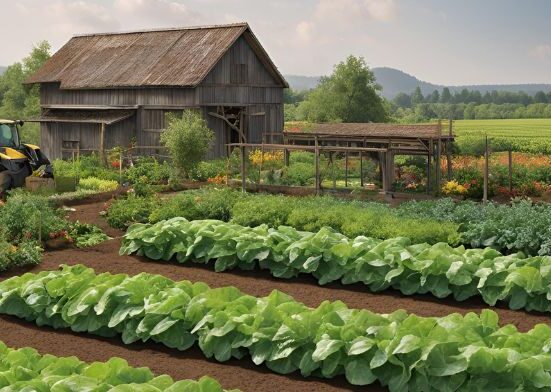Mint is a versatile and aromatic herb that can elevate your culinary creations, add a refreshing twist to beverages, and even serve as a natural air freshener. Growing Mint from seeds is a rewarding endeavour that allows you to cultivate this delightful plant right at home, whether in a garden, on a balcony, or even on a sunny windowsill. While Mint is often propagated through cuttings due to its ease, starting from seeds offers a sense of accomplishment and the opportunity to explore a variety of mint species. In this comprehensive 3000-word guide, we’ll walk you through every step of growing Mint from seeds, from picking the appropriate seeds to gathering your lush, fragrant mint plants. Regardless of your level of gardening experience, this guide will give you the skills and self-assurance you need to be successful.
Why Choose to Grow Mint from Seeds?
Growing Mint from seeds is a rewarding and budget-friendly way to cultivate this versatile herb. You can experiment with a range of mint varieties by starting with seeds, such as spearmint, peppermint, or chocolate mint, that may not be readily available as seedlings. It’s ideal for gardeners who enjoy watching plants grow from the very beginning, offering a deeper connection to the growing mint planting seeds process.
Starting Mint from seeds also ensures healthier, pest-free plants without the risk of introducing diseases from store-bought transplants. It’s an excellent option for windowsills, raised beds, and container gardening. While it may take a little more time and patience than using cuttings or transplants, the cost-effectiveness and satisfaction of growing your own flavorful Mint make it worthwhile. Plus, once established, Mint is a vigorous grower that provides fresh leaves for teas, salads, desserts, and more, all season long. Growing Mint from seeds is simple, sustainable, and satisfying.
Types of Mint You Can Grow
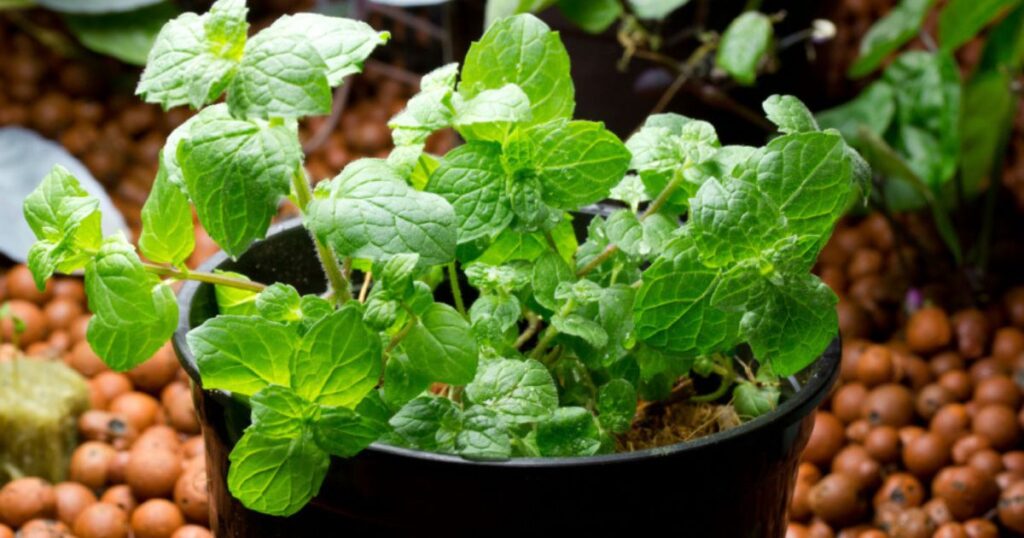 Mint comes in many fragrant and flavorful varieties, making it a versatile addition to any garden. Spearmint is one of the most common types, known for its bright green leaves and mild, sweet flavour—perfect for teas and salads. Peppermint, with its strong menthol taste, is ideal for desserts, candies, and digestive remedies. Apple mint has soft, fuzzy leaves and a fruity aroma that adds a unique twist to drinks and jellies. Chocolate mint carries a subtle cocoa scent, pairing well with sweet treats. Pineapple mint stands out with its creamy variegated foliage and tropical notes, adding both beauty and taste to garden seed mint health benefits of peaches beds.
Mint comes in many fragrant and flavorful varieties, making it a versatile addition to any garden. Spearmint is one of the most common types, known for its bright green leaves and mild, sweet flavour—perfect for teas and salads. Peppermint, with its strong menthol taste, is ideal for desserts, candies, and digestive remedies. Apple mint has soft, fuzzy leaves and a fruity aroma that adds a unique twist to drinks and jellies. Chocolate mint carries a subtle cocoa scent, pairing well with sweet treats. Pineapple mint stands out with its creamy variegated foliage and tropical notes, adding both beauty and taste to garden seed mint health benefits of peaches beds.
Other options include orange Mint, ginger mint, and lemon mint, each offering a distinctive aroma and flavour. Most mint varieties are fast-growing and thrive in containers or garden borders, making them easy to grow and enjoy fresh peppermint seeds year-round.
Types of Mint
Mint comes in various species and hybrids, each with its unique flavour and growth characteristics. Some popular varieties include:
- Spearmint: Mild and sweet, perfect for culinary uses like salads and beverages.
- Peppermint: Strong, menthol-like flavour, great for teas and desserts.
- Chocolate Mint: A hint of chocolatey aroma, ideal for desserts and garnishes.
- Apple Mint: Fruity and mild, excellent for fresh eating or herbal infusions.
- Lemon Mint: Citrusy notes, perfect for teas and cocktails.
Based on your planned purpose and personal preferences, pick a variety. If you’re unsure, spearmint and peppermint are great starting points for beginners due to their hardiness.
Where to Buy Seeds
Purchase seeds from reputable sources to ensure quality and viability. Look for:
- Seed Companies: Trusted brands like Burpee, Johnny’s Selected Seeds, or Baker Creek Heirloom Seeds offer reliable mint seeds.
- Local Nurseries: Some nurseries carry seeds, especially for regional varieties.
- Online Retailers: Websites like Amazon or Etsy may offer mint seeds, but check seller reviews to avoid low-quality products.
When buying, check the seed packet for information on germination rates, planting instructions, and the harvest timeline. Opt for fresh seeds (packaged for the current growing season) to maximize germination seeds for mint plant success.
Caring for Mint Seedlings
After germination, your mint seedlings need proper care to grow strong and healthy.
Watering
- Make sure the soil is constantly damp but not soggy. When the soil’s top inch feels dry, water it.
- For indoor seedlings, use a spray bottle or bottom-watering trays to avoid disturbing delicate roots.
- Outdoors, water deeply once or twice a week, depending on rainfall and temperature.
Light
- Provide 6–8 hours of sunlight daily. If growing indoors, use grow lights to supplement natural light, keeping them 6–12 inches above the seedlings.
- Rotate pots regularly to ensure even light exposure.
Fertilizing
- Once seedlings develop their first true leaves (the second set of leaves), feed them with a diluted liquid fertiliser (e.g., fish emulsion or a balanced 10-10-10 fertiliser) every 2–3 weeks.
- Avoid over-fertilising, as it can lead to leggy growth or reduced flavour.
Thinning and Transplanting
- If multiple seedlings sprout in one spot, thin them to the strongest one per cell or 12–18 inches apart in the garden.
When seedlings are 3–4 inches tall and have 4–6 true leaves, they’re ready to transplant. Harden them off by gradually exposing them to outdoor conditions over 7–10 days.
How to Choose Quality Mint Seeds
Selecting quality mint seeds is the first step to growing healthy, flavorful plants. Start by choosing seeds from a reputable supplier or brand known for high germination rates and non-GMO practices. Look for mint varieties suited to your climate and growing goals—peppermint for strong menthol flavour, spearmint for milder culinary use, or chocolate mint for a unique tw st. Check the seed packet for freshness by confirming the “packed for” or expiration date; fresher seeds tend to germinate more seeding mint reliably.
Opt for organic seeds if you want to avoid chemicals in your garden. Inspect the seeds for uniform size and colour—shrivelled or discoloured seeds may not sprout well. Also, verify if the seeds are heirloom or hybrid, depending on whether you want to save seeds for future seas ns. Choosing the right seeds sets the foundation for vigorous growing mint from seed mint plants that will thrive in containers, gardens, or window boxes.
When to Plant Mint Seeds
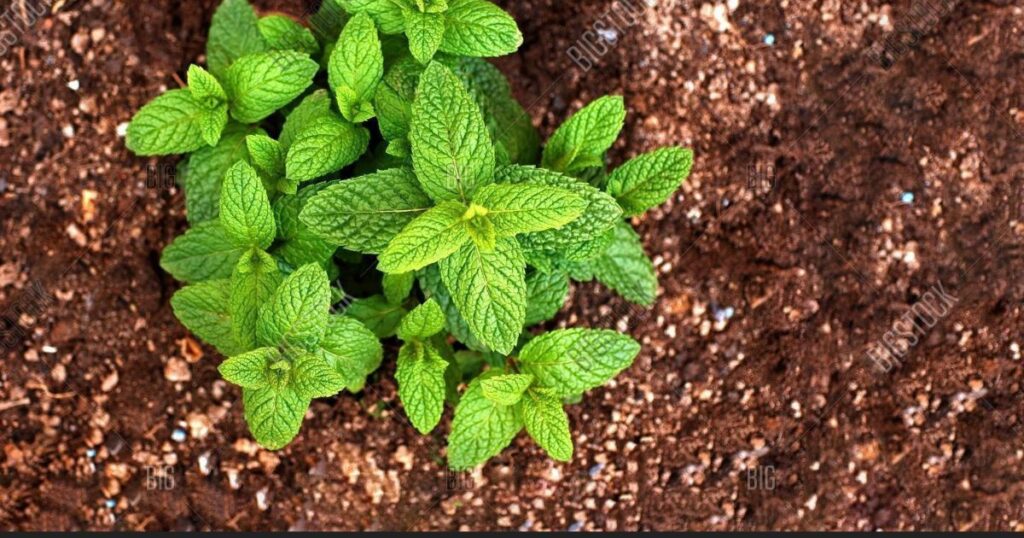 Mint seeds should be planted in the early spring, just after the last frost, when soil temperatures begin to warm. This typically falls between late March and May, depending on your climate zone. Mint thrives in temperatures between 55°F and 70°F (13°C to 21°C), making spring the ideal time for seed germination. For indoor sowing, you can start seeds 8–10 weeks before the last expected frost and transplant seedlings outdoors once the weather how to plant mint seeds orchard tree stabilises.
Mint seeds should be planted in the early spring, just after the last frost, when soil temperatures begin to warm. This typically falls between late March and May, depending on your climate zone. Mint thrives in temperatures between 55°F and 70°F (13°C to 21°C), making spring the ideal time for seed germination. For indoor sowing, you can start seeds 8–10 weeks before the last expected frost and transplant seedlings outdoors once the weather how to plant mint seeds orchard tree stabilises.
Mint prefers moist, well-draining soil and partial to full sun, though it can tolerate some shade. In warmer regions, fall planting is also possible, giving the seeds a head start for spring growth. Keep in mind that Mint spreads vigorously, so consider planting it in containers or using garden barriers. Timely planting ensures healthy roots, lush foliage, and a long harvesting season filled with the fresh, invigorating scent and mint plant seeds flavour of Mint.
Supplies You’ll Need
To grow Mint from seeds, gather the following supplies:
- Mint seeds
- Seed starting trays or pots
- Seed-starting mix (light and well-draining)
- Plastic dome or plastic wrap (to retain humidity)
- Labels and markers
- Spray bottle for misting
- Grow light or sunny windowsill
Optional: Heat the mat to speed up germination
How to Start Mint Seeds Indoors
Starting mint seeds indoors is a great way to jump-start your herb garden before the outdoor season begins. Begin by filling small seed trays or pots with a light, well-draining seed-starting mix. Gently press the mint seeds onto the surface of the soil—don’t bury them, as they need light to germinate. Mist the surface with water to keep it moist, and cover the container with a clear plastic lid or wrap to maintain humid ty. Place the setup in a warm area with indirect light or under a grow light. Mint seeds typically Commercial Farming germinate mint seed within 10 to 15 days.
Once the seedlings have developed a couple of true leaves, thin them out and transplant the strongest ones into larger pots. Continue to water lightly and ensure they get plenty of bright light. By starting indoors, you’ll give your Mint a healthy, vigorous beginning for eventual transplanting into your garden or mint from seeds containers.
Step-by-Step Instructions:
- Fill trays with seed-starting mix.
- Use a loose, well-aerated medium. Avoid garden soil.
- Sow seeds shallowly
- Scatter mint seeds lightly on the surface. Do not bury them deeply — they need light to germinate.
- Mist the surface
- Gently mist with water to moisten the seeds.
- Cover with a plastic dome.
- This keeps humidity high, aiding germination.
- Place in a warm area
- Ideal soil temperature is 70–75°F (21–24°C).
- Provide light
- Use a grow light or a bright windowsill (south-facing is best).
- Wait for germination
- Mint seeds can take 7–21 days to sprout. Be patient!
- Thin the seedlings
- Once sprouted, thin to the strongest seedling per cell or pot.
Transplanting Mint Seedlings Outdoors
Once seedlings are 3–4 inches tall and all danger of frost has passed:
- Harden off seedlings
- Gradually introduce them to outdoor conditions over 7–10 days.
- Choose a site
- Mint prefers partial to full sun and moist, fertile soil.
- Prepare the soil
- Enrich with compost or aged manure. Ensure good drainage.
- Plant seedlings 12–18 inches apart
- Mint spreads fast, so give it room.
- Water well after transplanting
How to Grow Mint in Containers
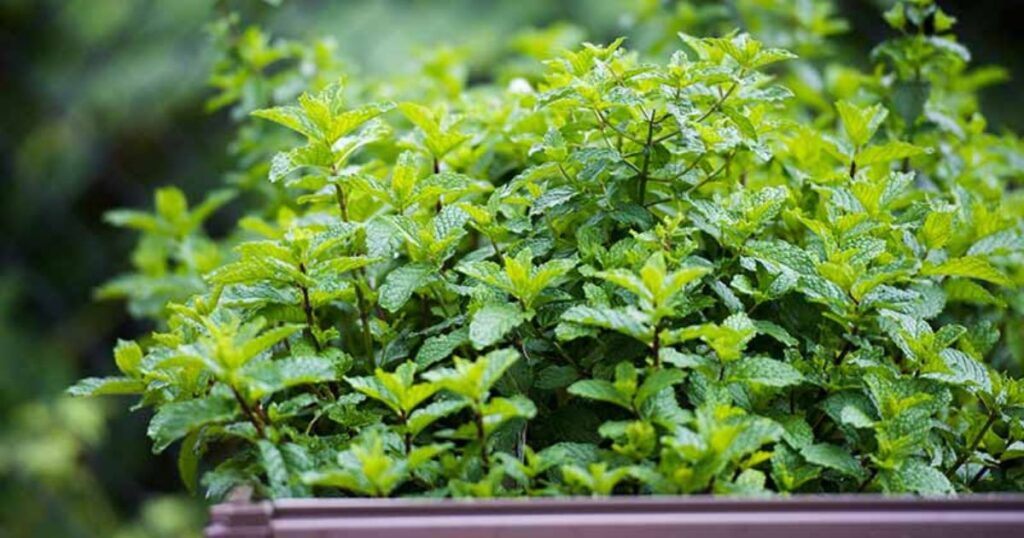 Growing Mint in containers is an easy and effective way to enjoy this fragrant herb without it taking over your garden. Mint spreads quickly through underground runners, so planting it in pots gives you control while still enjoying a lush harvest. Choose a wide container with good drainage and fill it with nutrient-rich potting mix. Place your container in a spot with partial to full sun—Mint thrives with at least 4–6 hours of sunlight daily. To keep the soil damp but not waterlogged, water it frequently. And pinch back the tips often to encourage bushier growth.
Growing Mint in containers is an easy and effective way to enjoy this fragrant herb without it taking over your garden. Mint spreads quickly through underground runners, so planting it in pots gives you control while still enjoying a lush harvest. Choose a wide container with good drainage and fill it with nutrient-rich potting mix. Place your container in a spot with partial to full sun—Mint thrives with at least 4–6 hours of sunlight daily. To keep the soil damp but not waterlogged, water it frequently. And pinch back the tips often to encourage bushier growth.
Container-grown Mint also benefits from occasional feeding with a balanced liquid fertiliser. Since Mint is hardy and vigorous, it grows well indoors on sunny windowsills or outdoors on patios and balconies. With a bit of attention, you’ll have a steady supply of fresh leaves perfect for teas, salads, desserts, or seed mint garnishes.
Outdoor Mint Growing Tips
- Mint thrives in moist, well-drained soil.
- Prefers pH 6.0–7.0
- Will grow in part shade, but a stronger flavour comes from more sun.
- Mulch plants to keep them moist and keep weeds away.
- Divide plants every 2–3 years to keep them healthy.
Watering and Feeding Mint
- Watering: Keep the soil evenly moist, especially in hot at. Don’t let it dry out.
- Fertilising: Use a balanced organic fertiliser once a month during the growing season. Avoid high-nitrogen fertilizers — they can reduce flavour.
Pruning and Harvesting Mint
Frequent pruning encourages bushier growth.
- Begin harvesting once plants reach 4–6 inches tall.
- Snip leaves or stems just above a node (leaf joint)
- Never harvest more than 1/3 of the plant at a time.
- Prune flowers if you want more leaves (flowering can reduce leaf quality)
Regular cutting prevents legginess and spreading.
Overwintering Mint
Mint is perennial in most zones.
- In cold zones, mulch heavily or bring pots indoors
- Cut back to 1–2 inches in fall
- For indoor overwintering, place in a sunny window and reduce watering
- Resume complete care in early spring
Common Problems and How to Fix Them
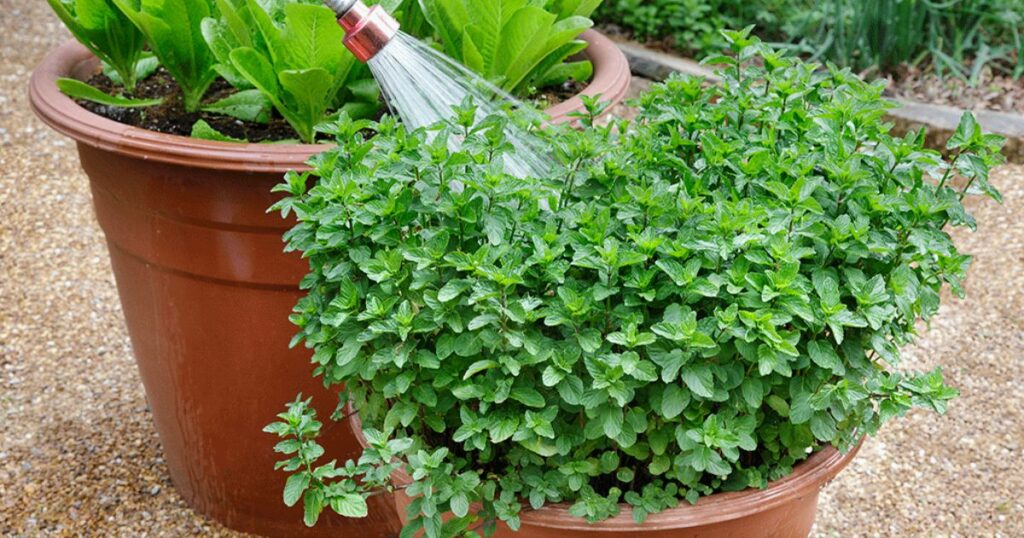 In any gardening or growing endeavour, encountering common problems is inevitable. This section highlights the typical issues you might face and offers practical solutions to overcome them. From pests and diseases to nutrient deficiencies and environmental stress, understanding these challenges helps ensure a healthy and thriving garden. For instance, yellowing leaves may indicate overwatering or lack of nutrients, while wilting could signal root problems or insufficient hydration. Pest infestations like aphids or spider mites can be managed with natural remedies or targeted treatments.
In any gardening or growing endeavour, encountering common problems is inevitable. This section highlights the typical issues you might face and offers practical solutions to overcome them. From pests and diseases to nutrient deficiencies and environmental stress, understanding these challenges helps ensure a healthy and thriving garden. For instance, yellowing leaves may indicate overwatering or lack of nutrients, while wilting could signal root problems or insufficient hydration. Pest infestations like aphids or spider mites can be managed with natural remedies or targeted treatments.
Additionally, this guide addresses how to prevent fungal infections by maintaining proper airflow and watering techniques. By recognising early warning signs and applying simple fixes, gardeners can save their plants from damage and encourage robust growth. Whether you’re a beginner or experienced grower, these tips empower you to tackle common problems confidently and keep your garden flourishing.
Common Issues:
- ProblemCauseSolution
- Poor germination, too deep planting, and low light. Sow shallow, ensure warmth and light.
- Yellow leaves: Overwatering or poor drainage. Improve drainage, water less.
- Weak flavour, too little sunli ht. Move to a sunnier spot
- Leggy plants, not pruning enough. Prune regularly to promote bushiness.
How to Store and Use Fresh Mint
Fresh Mint is a versatile herb that adds a refreshing flavour to many dishes and drinks. To keep it fresh longer, store Mint properly. First, trim the stems and place the bunch in a glass of water, like a bouquet. Cover the leaves loosely with a plastic bag and refrigerate—this method can keep Mint fresh for up to a week. Alternatively, wrap the Mint in a damp paper towel and store it inside a sealed plastic bag in the fridge. For more extended storage, freeze chopped Mint in ice cube trays with water or olive oil for easy use in recipes.
When using fresh Mint, add it toward the end of cooking to preserve its bright flav ur. It’s perfect in teas, salads, sauces, desserts, and cocktails. Using fresh Mint regularly enhances meals with its cooling, aromatic touch while boosting digestion and freshness. Proper storage ensures you always have this fragrant herb ready to elevate your dishes.
Drying and Preserving Mint
Drying and preserving Mint is an excellent way to enjoy its fresh, aromatic flavour year-ro nd. To dry Mint, start by harvesting healthy, vibrant sprigs in the morning, just before the sun becomes too hot, but after the dew has dried. Gently rinse the leaves and pat them dry. You can air dry Mint by bundling several sprigs together and hanging them upside down in a warm, well-ventilated area away from direct sunli ht.
Alternatively, to expedite the process, use a low-temperature oven or a dehydrator. Once completely dry, the leaves should crumble easily between your fingers. Store the dried Mint in an airtight container away from light and moisture to preserve its flavour and aroma. Properly dried and stored, Mint can last for up to a year, making it perfect for teas, cooking, and natural remedies whenever fresh Mint is not available.
Air Drying:
- Harvest in the morning.
- Tie bunches and hang upside down in a dark, dry, well-ventilated space.
- Takes 1–2 weeks
Oven or Dehydrator:
- Dry at low temperature (95–115°F / 35–45°C)
- Store in airtight jars away from light.
You can also infuse Mint into oils, vinegars, or syrups.
Top Culinary Uses for Mint
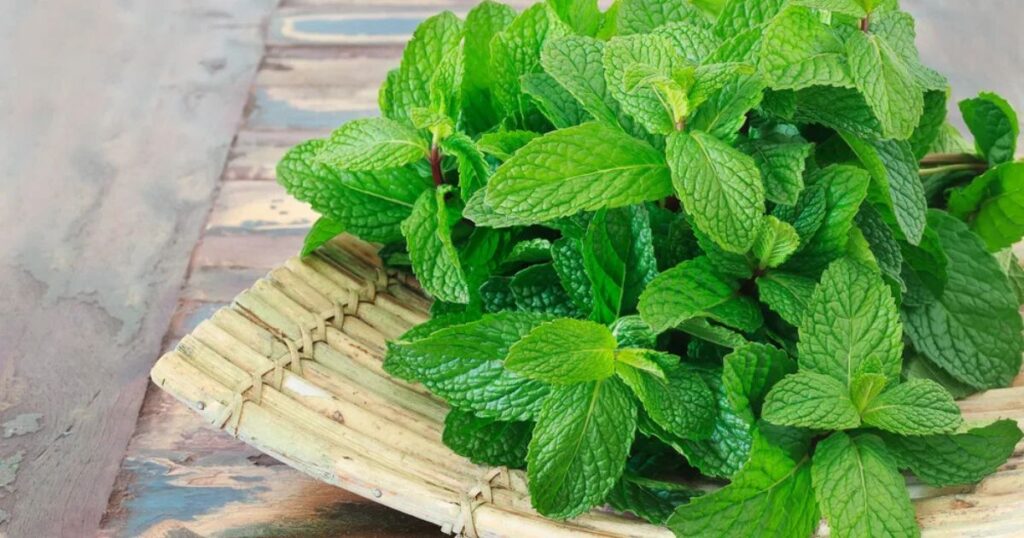 Mint is a versatile herb cherished worldwide for its refreshing flavour and aromatic qualities. In the culinary world, Mint adds a bright, cool note to both sweet and savoury dishes. It’s commonly used fresh in salads, beverages like mojitos and iced teas, and as a garnish for desserts such as ice cream and fruit salads. Mint also pairs beautifully with lamb, chicken, and fish, enhancing these proteins with its distinctive zest. In Middle Eastern and Mediterranean cuisines, Mint is a key ingredient in sauces like tzatziki and tabbouleh.
Mint is a versatile herb cherished worldwide for its refreshing flavour and aromatic qualities. In the culinary world, Mint adds a bright, cool note to both sweet and savoury dishes. It’s commonly used fresh in salads, beverages like mojitos and iced teas, and as a garnish for desserts such as ice cream and fruit salads. Mint also pairs beautifully with lamb, chicken, and fish, enhancing these proteins with its distinctive zest. In Middle Eastern and Mediterranean cuisines, Mint is a key ingredient in sauces like tzatziki and tabbouleh.
Additionally, mint leaves are often infused in syrups and jellies or blended into chutneys and pestos, offering a fresh twist. Beyond flavour, Mint’s natural cooling effect makes it popular in refreshing summer dishes. Its culinary flexibility, from beverages to main courses and desserts, secures Mint’s place as an essential herb in kitchens around the world.
Conclusion:
Growing Mint from seeds is a fulfilling journey that combines patience, care, and creativity. By following this guide, you’ll be well-equipped to sow, nurture, and harvest your mint plants, whether for culinary delights, aromatic enjoyment, or garden beauty. From selecting the perfect seeds to managing Mint’s vigorous growth, each step offers an opportunity to connect with nature and enhance your gardening skills. Start small, experiment with different varieties, and soon you’ll have a thriving mint patch that brings flavour and fragrance to your life year-round.
FAQ:
Can you Grow Mint from Seeds?
Yes, Mint can be grown from seeds, but it’s often easier and faster to propagate from cuttings or runners since mint seeds can be slow to germinate and sometimes have low viability.
How long do Mint Seeds take to Germinate?
Under ideal circumstances, mint seeds normally take 10 to 15 days to germinate. consistent moisture and temperatures around 65-70°F (18-21°C).
Do Mint Seeds Need Light to Germinate?
Yes, mint seeds require light to germinate, so avoid covering them with too much soil. Press seeds lightly onto the soil surface for best results.
What Soil is Best for Starting Mint Seeds?
Use a well-draining, fertile seed-starting mix. Keep the soil moist but not waterlogged to encourage healthy seedling growth.
How should I care for Mint Seedlings?
Provide plenty of indirect sunlight, maintain moist soil, and transplant seedlings when they develop 2-3 sets of true leaves into larger pots or the garden.




